Alberta Wheat Pool Menaik
Alberta Wheat Pool Menaik
Story and photos by Chris & Connie.
This old “prairie sentinel” was once located along the railway line in Menaik Alberta, but for the last few decades has stood at farm not terribly far away, where for many years it was used for grain storage. Rendered obsolete by the passage of time and changes in agricultural techniques and technology, it’s no longer needed and actually hasn’t been used for some time, it’s future, at best, now a bit uncertain.
We know the building was constructed in the 1920s but there seems to be a bit of a disagreement as to the exact year. The former owner, who originally purchased it and moved it to the farm, says it’s from 1922. Other records found and other people spoken to, tend to suggest it’s from a few years later. One thing is certain though: given the size of it, style of construction and overall layout, it’s right for that general era. Let’s say the 1920s and leave it at that.
The building is lettered for the Alberta Wheat Pool, or AWP or simply “the Pool”, a farmer owned collective founded in the 1920s and for many, many decades the province’s biggest grain handling firm. They, at the peak, had over eight hundred elevators scattered across the province. The firm, starting in the 1990s, has long since been merged out of existence.
The company that built the elevator however, and who owned it until the late 1940s before selling it to the Pool, was Alberta Pacific Grain. They were a much smaller firm, operating from 1910-1960s, that owned several hundred elevators. Sales or even trades of individual elevators between grain firms was not uncommon by the way.
One feature generally not seen on AWP elevators is the metal cladding. Some firms, like Alberta Pacific used it, some, like the Pool didn’t, unless of course it came with an elevator bought second hand.
The Alberta Wheat Pool closed this facility in the mid to latter part of 1970s (exact date not clear). A year or two later, it was brought here to the farm, some five kilometres away, a job which took time and much effort. Part of the trip was on roads, and as a short cut, they traveled across a field. Power lines had to be temporarily cut to allow passage.
The building today is missing the driveway, an enclosed area where grain was offloaded from wagons and trucks. The old office was demolished when the elevator was moved as were the coal sheds (elevator firms often sold domestic or heating coal as a sideline). When built, the elevator’s grain handling machinery was driven by a gas engine. At the farm, a PTO arrangement was used, a tractor providing the power needed.
The workings of the old (human powered) man-lift are visible.
The elevator was last used for grain storage about 1997. It’s much quicker and easier to use metal bins for this purpose now, so it’s been empty ever since.
As was typical, the elevator is wood cribbed made of 2×6” boards laid flat and stacked. Traditional wood grain elevators, be they from the early 1900s, or as late as the 1970s and 1980s were similarly constructed (the design was proven and very loooong lasting). Yes, one from from 1910, 1930, 1960 or 1980 were all built to a similar design, although they could vary in size, and functioned and operated much the same. Modern concrete and steel elevators, in Canada, are a very recent occurrence.
Like all elevators, the town’s name can be seen emblazoned across its sides.
The Pool once had a second elevator at Menaik, built new in the late 1920s (exact date unclear) and closed the same time as the one seen here. It was not at all odd for a grain firm to have more than one outlet at any one loading point.
Recall, this elevator has not been used for some time – for last decade and half it’s been nothing more than a strange towering lawn ornament looming over the farm house – but now the owner’s decided it’d be better off gone. We get that. it’s not contributing to the bottom line and is a liability or at best a big giant wooden nuisance. We’re sentimental and love old buildings but what is a farmer supposed to do?
An old grain elevator is a tough sell, no doubt, and so far no one had really expressed an interest in it. If anyone is to take it, it’d likely be a wood salvage company. There is a LOT of planks and many massive beams in the building, some quite desirable and valuable. Even so, the work requited to tear it down and salvage everything will eat up much money, so even these firms are not jumping at the chance.
Of course, it’d be wonderful to have an museum or historical society grab it. That’s what we hope and wish for. But moving it would cost a fortune, so that seems unlikely. Those groups rarely have the much in the way of funds.
Why not simply tear it down? These old elevators are incredibly overbuilt, a gazillion nails (okay, well some big number anyway) holding everything together, making this a much more difficult task than it might appear initially.
For the time being things are in holding pattern. If someone comes forward with some money, no matter what plans they have for it, it’s gone. If not, it’ll stand for the next while only because it’s just too much work to demolish. But for how long? We can’t help think time is ticking.
In the 1930s, at the peak, there were over seventeen hundred wooden grain elevators in the province. Today, there are a couple hundred left, some in use, some not, and a number, like this one, sort of threatened. Each year a few more are lost.
Menaik was located just north of Ponoka, along the CPR’s busy Edmonton to Calgary line, and highway 2A, a secondary road. Was it a town or simply a railway siding and grain loading point? Little information can be found, so we don’t know, and nothing physically is left a the (town) site itself. We visited the place – it’s an empty field next to the tracks.
Other grain elevators with an uncertain future…
Searle Grain.
Whitepool.
Prairie Sentinels – Neidpath Saskatchewan.
If you wish more information on what you’ve seen here, by all means contact us!
Date: July, 2015.
Location: Near Ponoka AB.
Article references: Alberta Wheat Pool records, Owner Albert Meyer and former owner, Bernard Lentz who also moved it.
The elevator is on private property and there is no public access. BIGDoer visited with permission.
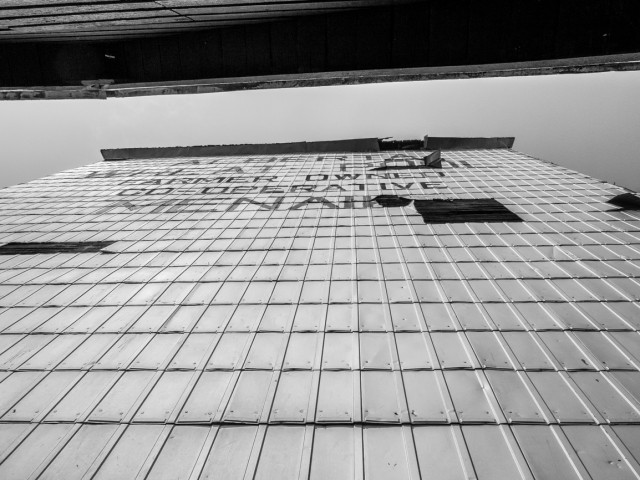
We visit the old Menaik Alberta grain elevator.
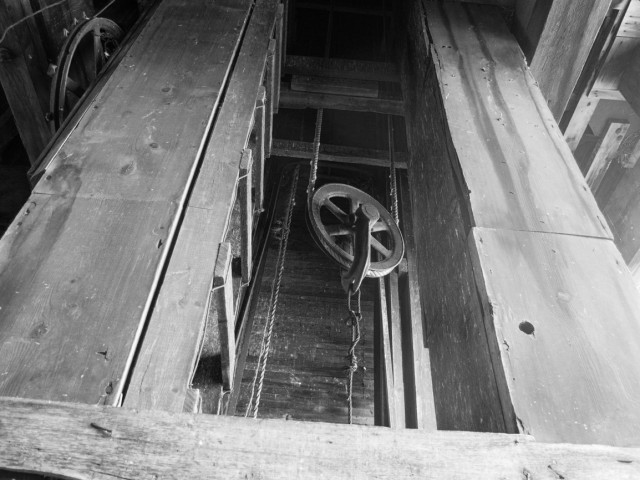
Details of the man lift.
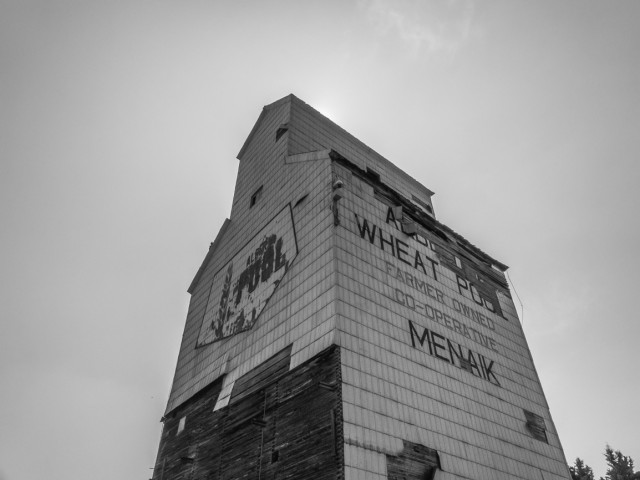
The sun casts a halo around the building.
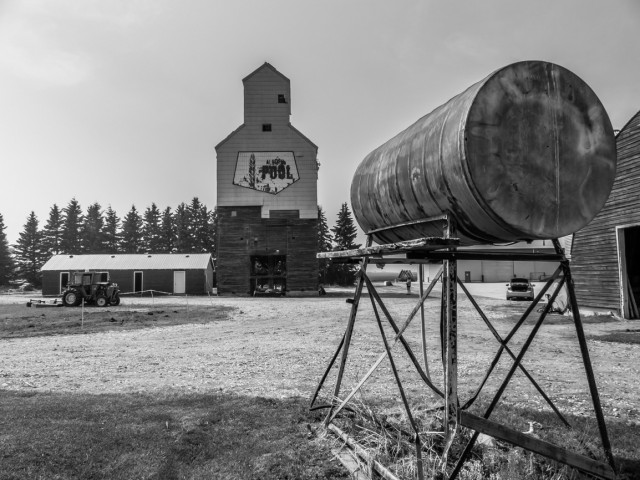
The elevator dates from the 1920s…
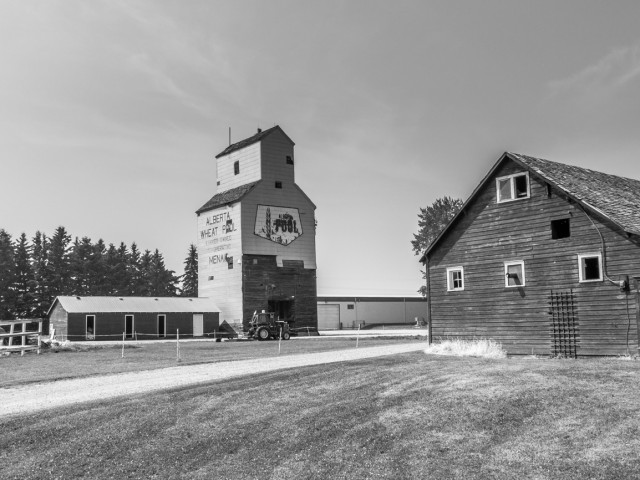
And has stood here at this farm since the 1970s.
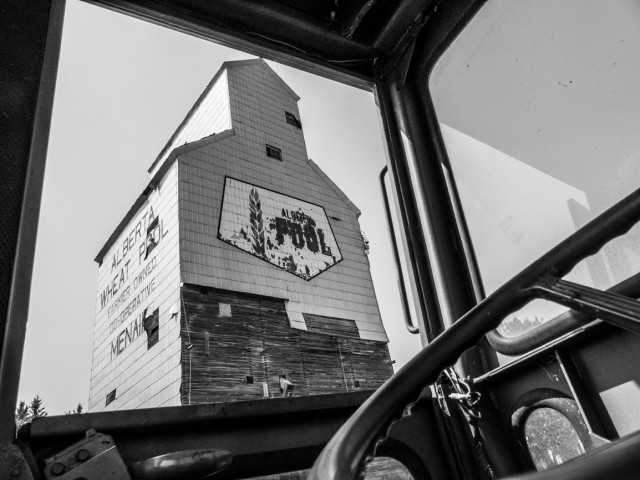
As you can see, it once belonged to the Alberta Wheat Pool.
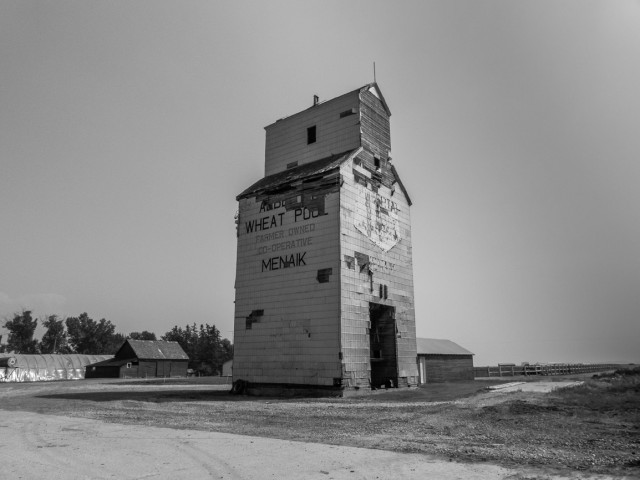
Last used in the 1990s, for grain storage, the building’s future is uncertain.
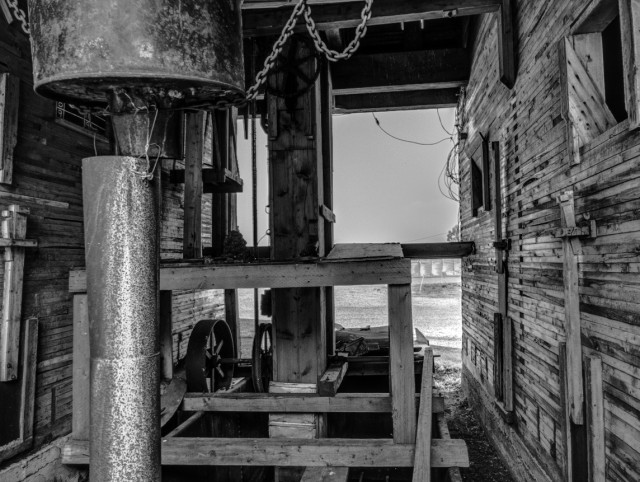
A peek inside.
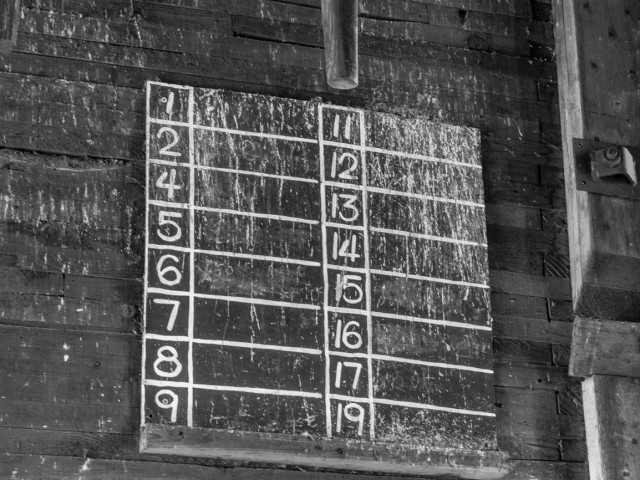
For marking if bins were full and what they held.
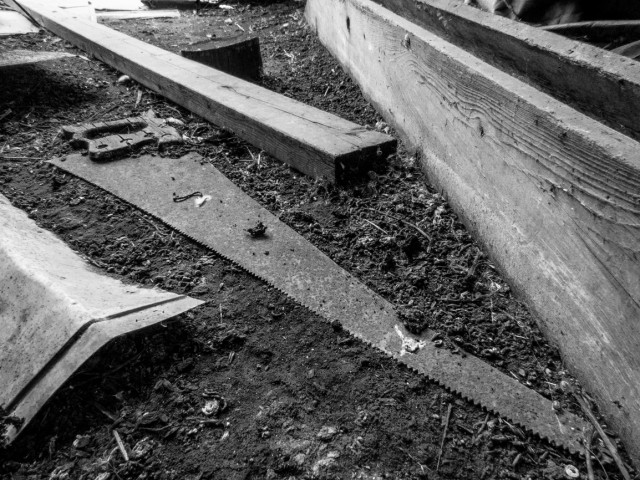
A forgotten saw…
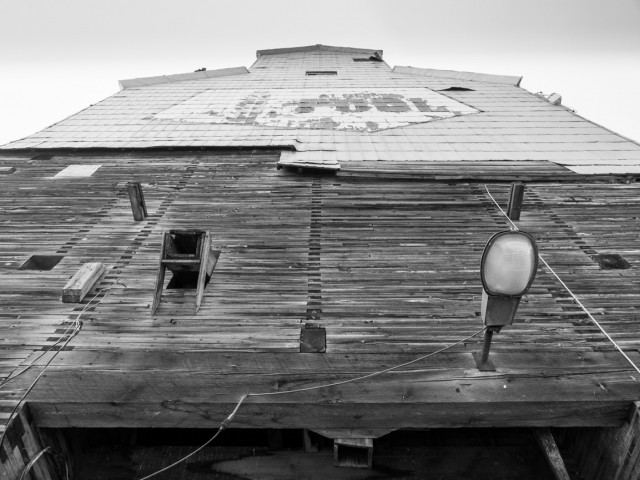
Metal cladding peels away exposing wood cribbing.
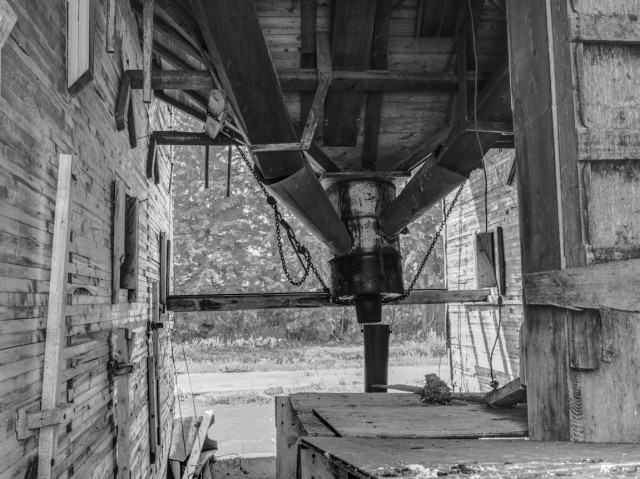
An old barrel is a make-shift delivery spout.
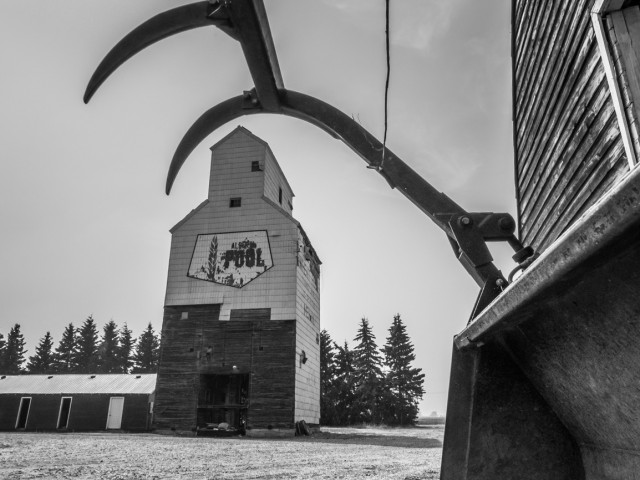
Ready to devour!

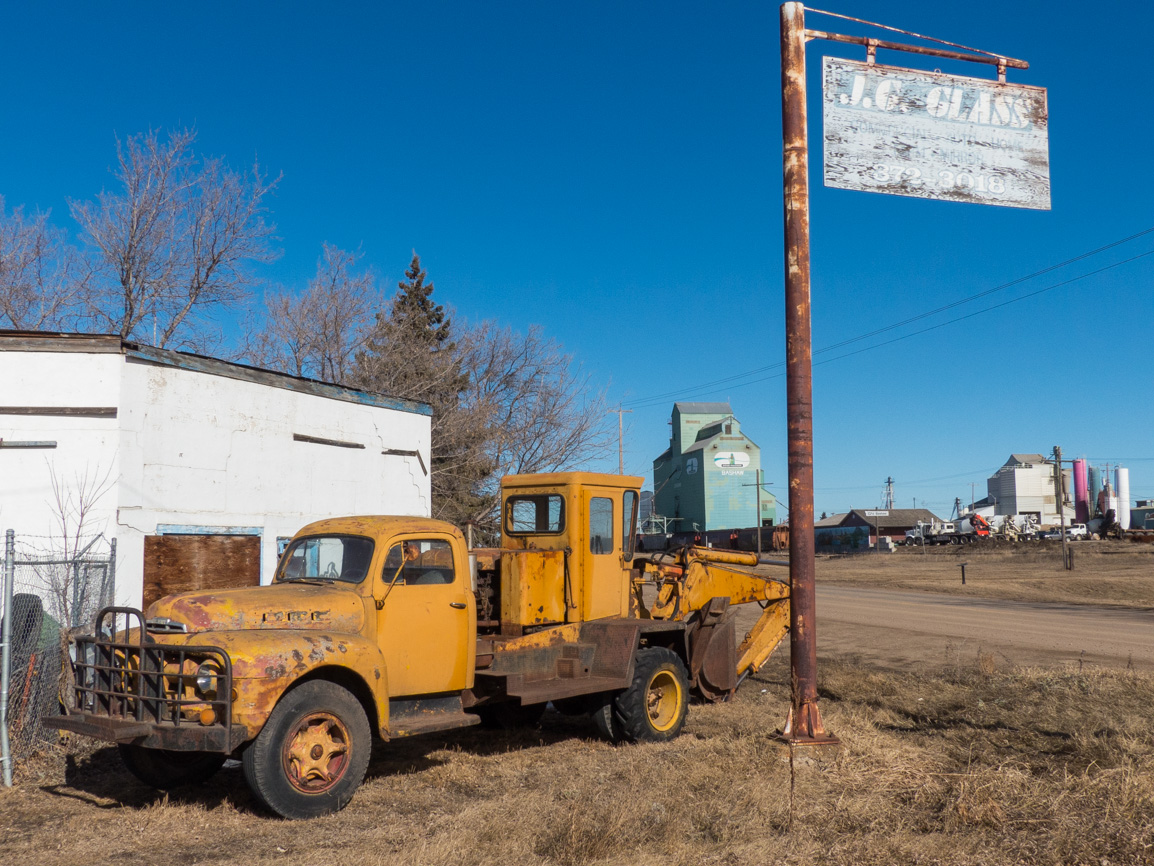
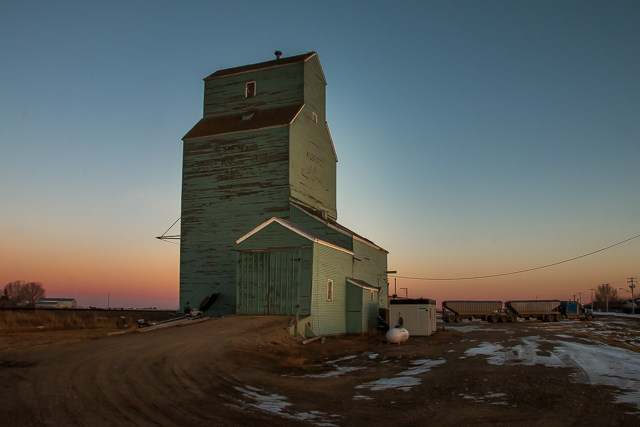
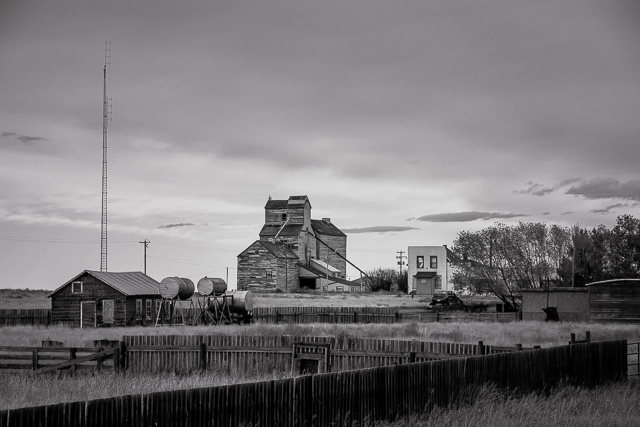
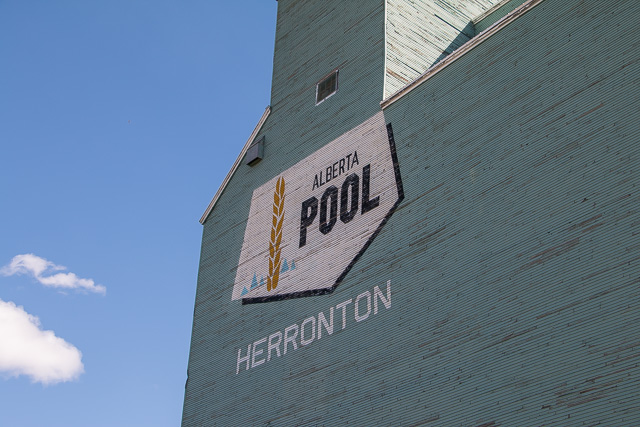
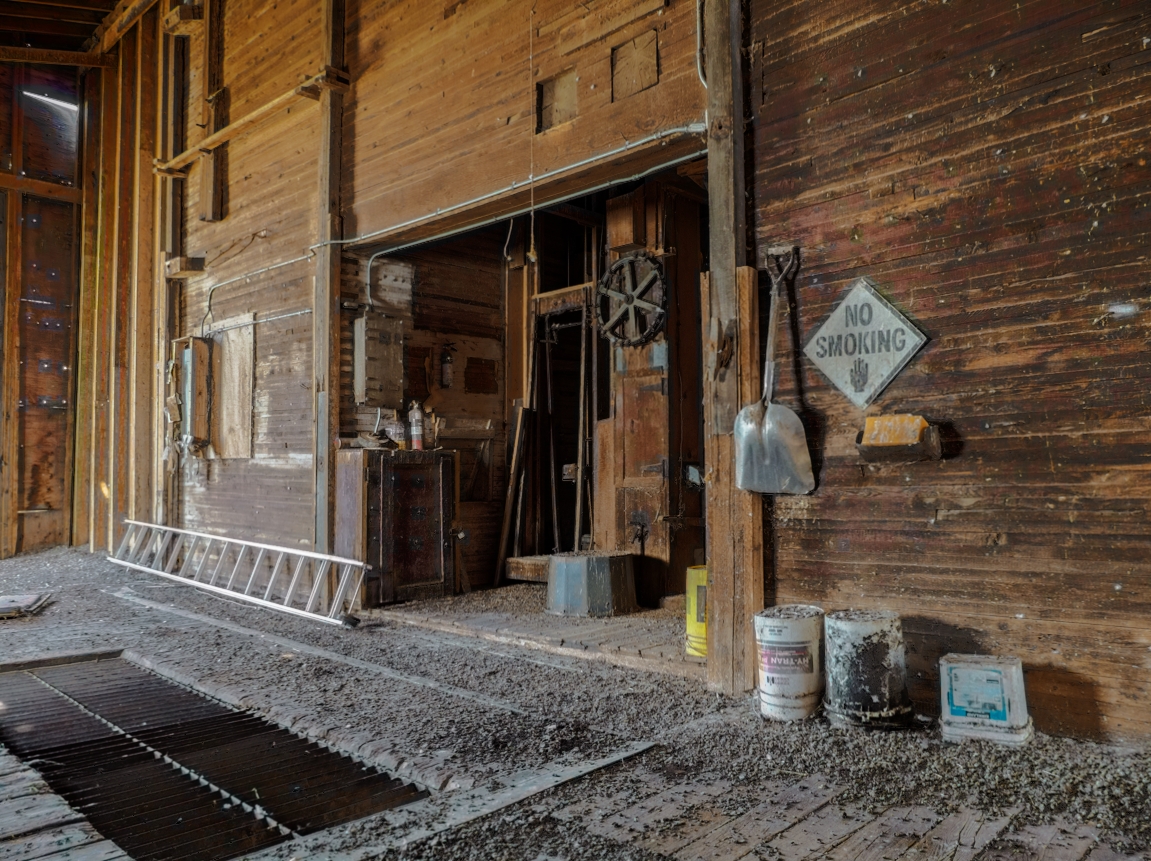

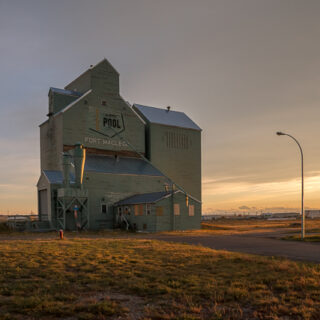
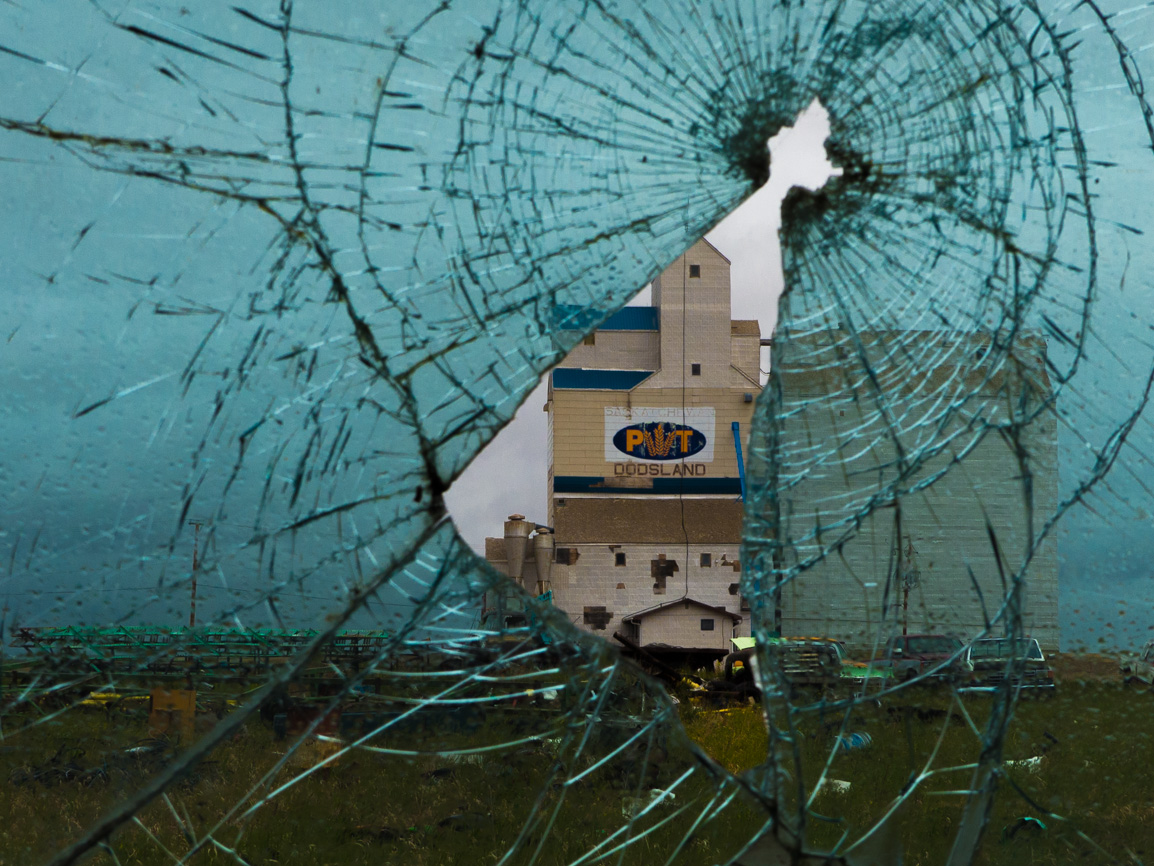
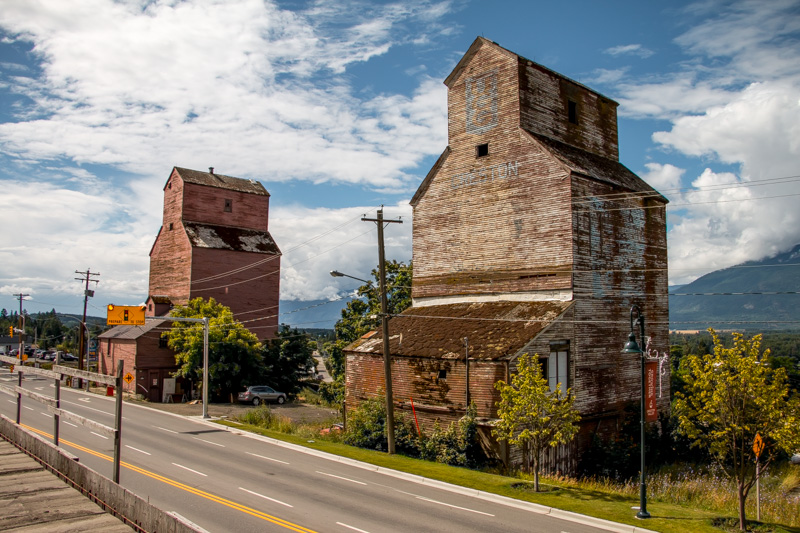
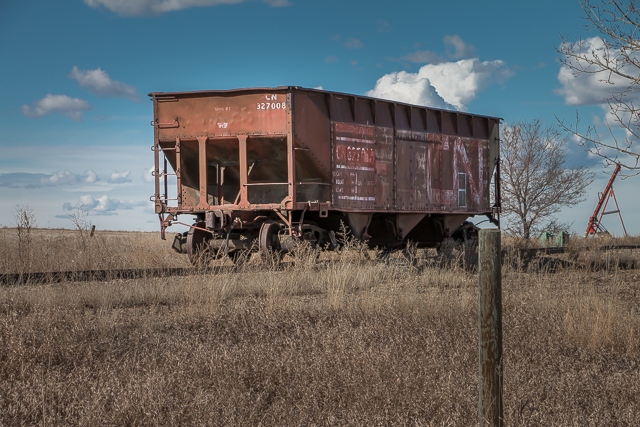
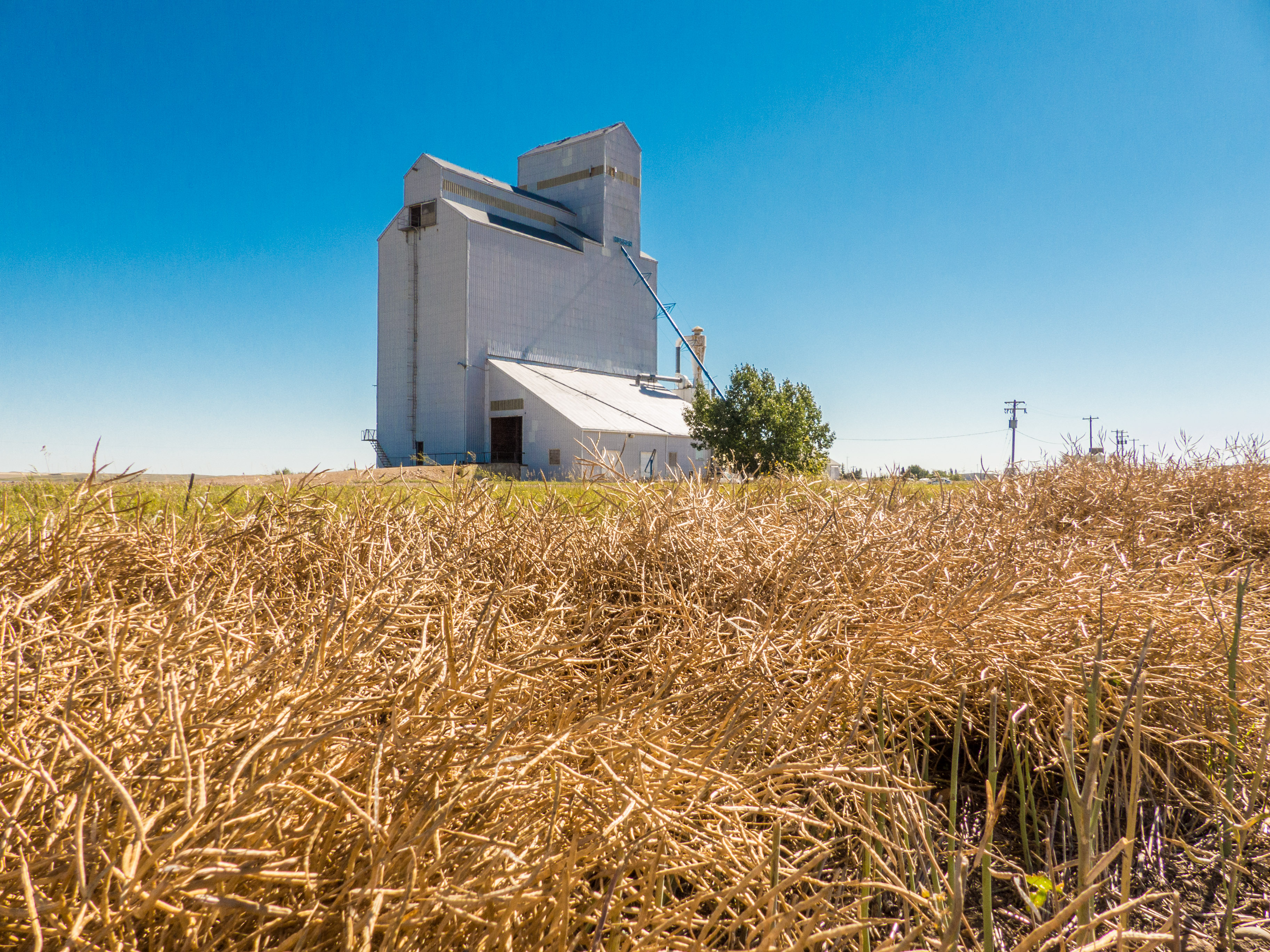
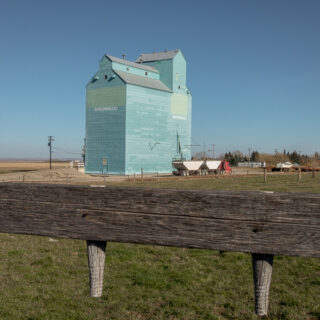
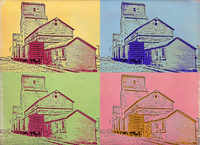





Interesting to find this. I grew up at Menaik. There was no town, just a building that served as a home to our family, a post office, general store, mechanic’s garage and service station. We were across the highway from the elevators. There were a couple of section mens’ houses and sheds nearby the elevators as well. I think that the one elevator was moved around 1972. The other was demolished memorably due to miscalculation on the part of the explosives expert in his failing to consider the amount of grain dust involved in the plan to implode the structure. It did not fall inwards, but blew huge timbers outwards as well as it came down.
Wow, cool memories. Thank you so much for sharing!
Nice, it still has the painted logos from Alberta wheat pool which you do not see very often.
Yes, it’s nice. Thanks for commenting!
Great photos of a great old elevator. So many Manitoba Pool elevators are clad… I prefer the “naked” ones.
Clad elevators are less common in Alberta, so I sort of like them for that reason alone. Of the naked ones, nothing (IMO) beats those painted mineral brown. Thanks for commenting!